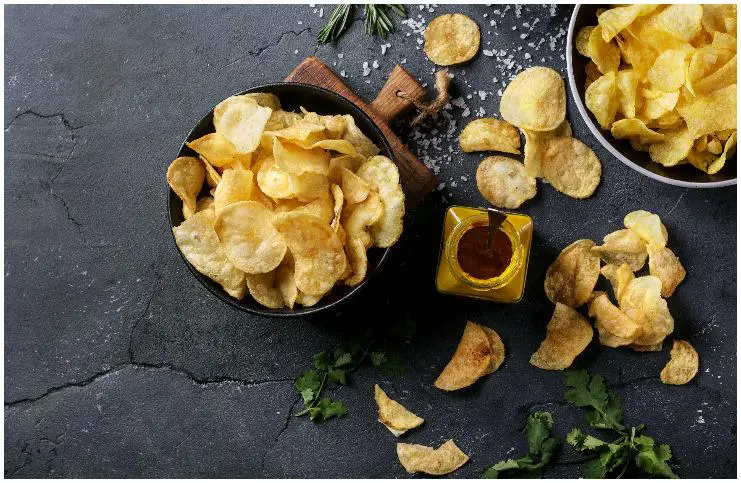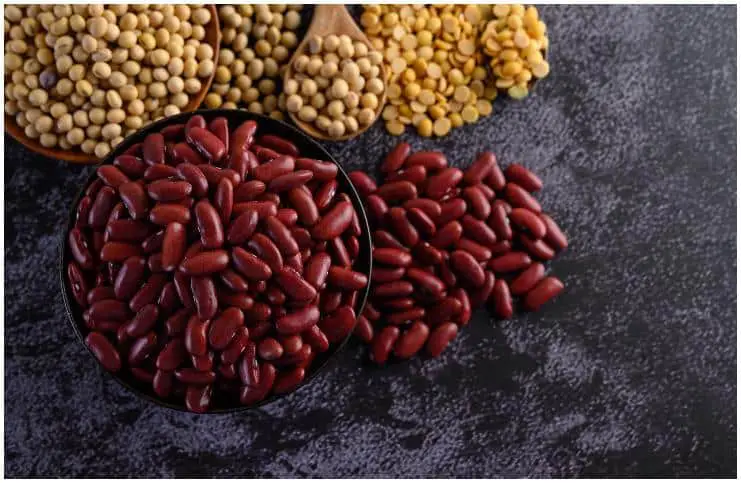Gallstones are formed in bile ducts located inside the liver and gallbladder, where they are created by the gallbladder to store excess bile produced by your liver. They can be anywhere from the size of a peanut to that of a golf ball or larger. Gallstones range in color from white, yellow or brown and are sometimes jagged on their edges. Gallstones can cause some gastrointestinal problems but more frequently it will result in pain in the abdominal region. Traditional medicine presents with treating gallstone symptoms by surgery. Surgery has its own drawbacks like post-operative complications, gallbladder removal, etc.. This is one of the main reasons why many people search for alternative cures for gallstones that do not involve long term side effects or cost associated with surgery.
The gallstone is one of the most important parts of the gallbladder. It helps in breaking down fats and other food that you eat into bile acids, thus making digestion easier. However, if a gallstone becomes too large and causes an obstruction in the bile duct and blocks it, this can cause a number of health problems.
You can find all the pertinent information you need on Churchgist about the spiritual meaning of bile , spiritual meaning of removing gallbladder, spiritual meaning of fatty liver and much more. This includes information about the spiritual meaning of gallstones and more.

Spiritual Meaning Of Gallstones
Gallstones are a common condition in which small masses of solid material form within the gallbladder. They are usually made of cholesterol and other substances that have been deposited in the gallbladder, and they can cause severe pain and other symptoms.
In spiritual terms, the word “gall” is often used as a metaphor for suffering or anger. In this case, it could be said that the formation of gallstones represents an accumulation of negative emotions within a person’s spirit or soul. This accumulation can then manifest itself in physical symptoms such as pain and inflammation.
In order to avoid further physical manifestations of negative emotions like anger, it is important for people to learn how to release their anger constructively through meditation or other practices that encourage emotional release.
Gallstones are a type of crystal that forms in the gallbladder. They form when bile becomes concentrated and thickens, and then hardens as it sits in the gallbladder.
When you have gallstones, your gallbladder will become inflamed and can cause pain in your abdomen. This pain is often described as “sharp” or “stabbing” and can be felt on either side of the stomach.
If you have had a history of gallstones, it is important to be aware of symptoms such as nausea and vomiting, bloating, indigestion, or pain under the ribs on one side. These symptoms may indicate that you need to see your doctor for further evaluation.
spiritual meaning of gallstones
The gallbladder, a 4-inch-long pear-shaped organ, is located in the right upper quadrant of the abdomen, right below the liver.
It is part of the biliary system, however, it does not produce the bile, but it stores the bile, which is currently not being used by the body.
This organ also releases bile, via the cystic duct, into the small intestine to help break down the foods you eat, especially fatty foods.
Furthermore, bile receptors TGR5 and FXR help to regulate carbohydrate metabolism and the inflammatory response.
In a healthy gallbladder, this process occurs painlessly and naturally. However, when the organ stops working correctly or the bile ducts are blocked (due to gallstones), it can cause a lot of discomfort and pain.
Gallstones range in size from as small as a grain of sand to as large as a golf ball.
Some individuals develop just one gallstone, while others develop several gallstones at the same time.
Tip – cholelithiasis is the name doctors sometimes call gallstones.
Types
There are three main types of gallstones:
- Mixed gallstones – they are a combination of pigmented and cholesterol stones;
- Pigmented gallstones – they form when there is too much bilirubin and calcium in your bile;
- Cholesterol gallstones – they form if you have too much cholesterol in your bile.
Statistics
10 to 20% of the total adult population is thought to have at least mild to moderate gallstones. The incidence rises with age, hence, people over 60 are most susceptible.
Women are much more likely than men to develop gallstones (in nearly 25 percent of women in the United States).
Caucasians of Northern Europe, Native Americans, and Hispanic descent are most likely to be at risk for gallstones.
Symptoms
Common symptoms may include:
- vomiting;
- nausea;
- dark urine;
- lighter-colored stools;
- pain in the right shoulder;
- a yellowish or greenish pigmentation of the whites of the eyes and the skin;
- having more than 4 bowel movements per day for at least 90 days;
- back pain between the shoulder blades;
- sudden and intensifying pain in the center of the abdomen;
- sudden and intensifying pain in the upper right portion of the abdomen.
Complications
Possible complications of gallstones include:
- Gallbladder cancer;
- Inflammation of the gallbladder (cholecystitis);
- Bowel obstruction from a gallstone;
- Gangrene of the gallbladder;
- Infection of the common bile duct;
- Obstruction of the main bile duct.
Causes
It is not exactly known what leads to gallstones, but they can form if:
- there are unusually high levels of a waste product called bilirubin (a breakdown product of heme catabolism) inside the gallbladder;
- there are unusually high levels of cholesterol inside the gallbladder.
Risk Factors
Risk factors associated with gallstones include:

- chronic blood disorders;
- liver cirrhosis and infections of the biliary tract;
- post-menopausal women taking hormone replacement;
- a diet high in cholesterol and fat, but low in dietary fiber;
- decreased motility of gallbladder;
- pregnancy;
- obesity;
- female gender;
- fasting;
- drugs, such as – thiazide diuretics, somatostatin, octreotide, ceftriaxone, hormone replacement therapy, oral contraceptives.
Diagnosis
Often, healthcare providers will spot signs of gallbladder problems during diagnostic testing for some other health condition or symptom.
Imaging tests used to diagnose gallbladder problems include:
- Cholescintigraphy (also called HIDA scan, DISIDA, or gallbladder radionuclide scan) – it is an imaging test which looks at the bile ducts to see if they are narrowed, blocked, or dilated;
- Endoscopic retrograde cholangiopancreatography (ERCP);
- Magnetic resonance imaging (MRI) – it uses radio waves and strong magnets instead of x-rays;
- Computed tomography (CT) scan – it uses x-rays to make detailed cross-sectional images of the body;
- X-rays;
- An ultrasound – it uses high-frequency sound waves to create an image of the inside of the body.
Treatment
Treatment options for gallstones include:
- Medications to dissolve gallstones;
- Surgery to remove the gallbladder – single-incision laparoscopic cholecystectomy is a newer form of keyhole surgery;
spiritual meaning of removing gallbladder
Bile is an extremely aggressive substance that burns fat. Gallbladder problems are always related to aggression, and it is obvious that you are not fully aware of being aggressive and indifferent, therefore, you are not releasing it.
This type of symptom usually indicates a suppressed aggression and a blockage of energy.
The typical choleric person is bilious by nature because she doesn’t release energy consciously.
Take a conscious look at anything that makes you angry without judging yourself. Anger will dissolve, and you will be able to use energy in a positive way.
Spiritual Meaning of Gallstones
In this case, the symptoms described above have an increasing stage of development.
The resentment of those feelings and the aggression are now embodied in a stone.
It is likely that your lifestyle is influenced by coercive forces.
Open up to life in all its beauty and leave the past aside. You have to think about your relational issues and the limits they indicate to you. Accept what you have discovered, as it is the only way to learn.
Any aspect that we encounter on the outside makes us react internally, enables us to learn, grow, and mature. In this way, life itself becomes our partner. Open up to this potential and stop clinging to the old problems.
Prevention
Exercise
Being sedentary increases your risk of a variety of health problems as well as slows your digestive system down.
The problem is that a slowed digestive system does not move bile out of the gallbladder as it should.
Lose Weight

Being overweight or obese may make you more likely to develop this condition.
On the other hand, losing weight in a short amount of time may also raise your chances of forming gallstones and gout.
Nutrition
Dietary fiber is the indigestible portion of food derived from plants (grains, seeds, vegetables, fruits, and legumes).
Eating fiber-rich foods can help you lose weight as well as it may prevent this condition.
Foods rich in dietary fiber include:

- red kidney beans;
- chickpeas;
- walnuts;
- almonds;
- hazelnuts;
- navy beans;
- pinto beans;
- green peas;
- potatoes;
- sweet potatoes;
- yams;
- radishes;
- bell pepper;
- tomatoes;
- broccoli;
- cabbage;
- zucchini;
- apples;
- pears;
- pineapples;
- papayas;
- mangoes;
- turnips;
- celery;
- blueberries;
- blackberries;
- raspberries;
- currants;
- onions;
- garlic;
- carrots.